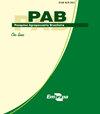Modeling the yield of winter maize using biomass distribution index in the tropical region of Yunnan, China
IF 0.7
4区 农林科学
Q3 AGRICULTURE, MULTIDISCIPLINARY
引用次数: 0
Abstract
Abstract The objective of this work was to establish and validate the dry matter distribution and yield prediction models based on physiological developmental timing, to compare the differences between the dry mass distribution index model and the dry mass distribution coefficient model, for the simulation of ear dry mass and to improve the accuracy of maize growth models for predicting yield. The experiments were conducted in three tropical sites (Longchuan, Mangshi, and Ruili) in the tropical region of Yunnan Province, China. The NRMS of ear dry mass and yield were generally less than 10. The dry mass distribution index method (NRMS = 5.44% and RMSE = 807.22 kg ha-1 for ear dry mass; and NRMS = 7.32% and RMSE = 707.67 kg ha-1 for grain yield) is better than the dry mass distribution coefficient method (NRMS = 7.52% and RMSE = 1115.31 kg ha-1 for ear dry mass; NRMS = 8.6% and RMSE = 830.76 kgha-1 for grain yield) to simulate maize ear dry mass and grain yield. The distribution index model improves the accuracy of the model, which is valuable for future maize production and management in Yunnan.利用生物量分布指数模拟云南热带地区冬玉米产量
摘要本研究旨在建立并验证基于生理发育时间的玉米干物质分布和产量预测模型,比较干质量分布指数模型与干质量分配系数模型之间的差异,用于玉米穗干质量的模拟,提高玉米生长模型预测产量的准确性。试验在云南省热带地区的龙川、芒市和瑞丽三个热带站点进行。穗干质量和产量的NRMS均小于10。耳干质量分布指数法(NRMS = 5.44%, RMSE = 807.22 kg ha-1);籽粒产量的NRMS = 7.32%, RMSE = 707.67 kg ha-1)优于干质量分配系数法(穗干质量的NRMS = 7.52%, RMSE = 1115.31 kg ha-1);NRMS = 8.6%, RMSE = 830.76 kga -1(产量),模拟玉米穗干质量和产量。该分布指数模型提高了模型的准确性,对云南未来玉米生产经营具有一定的参考价值。
本文章由计算机程序翻译,如有差异,请以英文原文为准。
求助全文
约1分钟内获得全文
求助全文
来源期刊

Pesquisa Agropecuaria Brasileira
农林科学-农业综合
CiteScore
1.20
自引率
0.00%
发文量
45
审稿时长
9-18 weeks
期刊介绍:
Pesquisa Agropecuária Brasileira – PAB – is issued monthly by Empresa Brasileira de Pesquisa Agropecuária – EMBRAPA, affiliated to Ministry of Agriculture, Livestock and Food Supply. PAB publishes original scientific-technological articles on Plant Physiology, Plant Pathology, Crop Science, Genetics, Soil Science, Food Technology and Animal Science.
Its abbreviated title is Pesq. agropec. bras., and it should be used in bibliographies, footnotes, references and bibliographic strips.
 求助内容:
求助内容: 应助结果提醒方式:
应助结果提醒方式:


